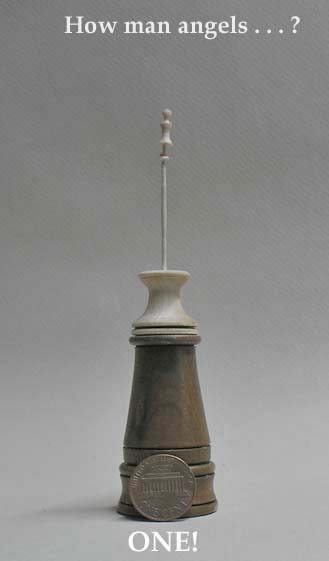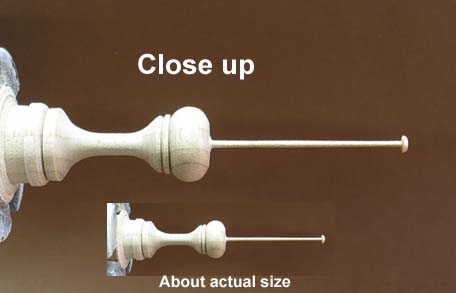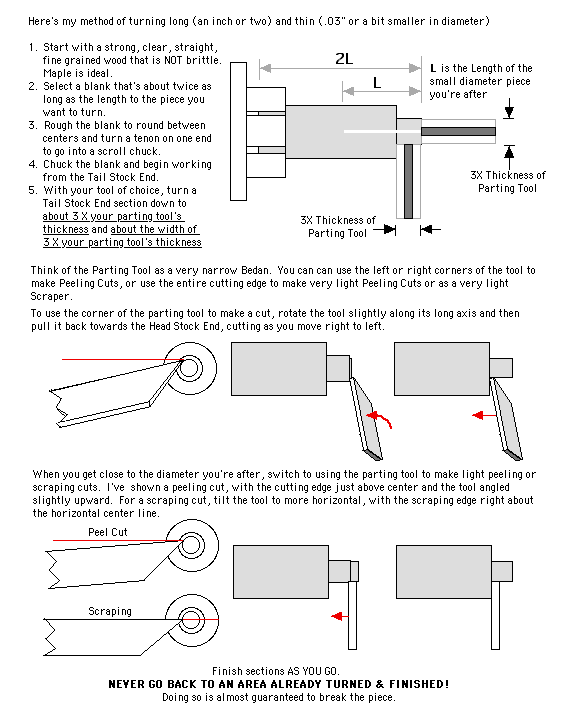I like to work out at the edge of, and slightly beyond, my turning abilities. Turning outside my Comfort Zone is fun and keeps things from getting boring. I also like to keep all the body parts I was issued at birth, and don't enjoy bleeding or visiting the Emergency Room.
Fortunately, I have a small lathe - a JET VS with only a nominal 10" diameter capacity. Smaller chunk of wood spinning around means less potential damage if anything goes wrong. And even when you're very careful, things CAN - and eventually WILL - go wrong. That's why we call such events ACCIDENTS - something that was unintended happening.
Smaller Is Safer. Turning relatively long, very small diameter stuff is pretty safe. We're talking less than 2" long and LESS THAN 1/32" in diamter. Specifically, I wanted to see if I could turn - a Straight Pin. I suspected I wouldn't be able to do THAT - but I wanted to see how close I could come. Rather than Aim High, I was Aiming Small. And the turning tool for turning small? Why a 1/16" thick parting tool, made from a bayonet saw blade - teeth ground off of course.
Why try and turn a Straight Pin? So I could then turn a small angel to sit on top of its head - and answer the question "How many angels can fit on the head of a pin?". (
This was the result of my first attempt. The penny in the photo provides the scale of the piece, As you can see, the "pin" is more like a fine finishing nail or brad. Oh, the little angel will get wings and a halo - when I figure out how to do that ; )

My SECOND attempt at turning a Straight Pin is a bit closer - 0.04" in diameter over a 1 1/4" length. That's closer to 1/32" than to 1/16".

If you want to try Turning Small, the following is a GIF image file you can download, print and take out to your lathe and use for YOUR first cut at turning small.

To see a YouTube video of this Turning Small Technique - Click Here
If you'd like to learn more about "How Many Angles . . . ?" just CLICK HERE.